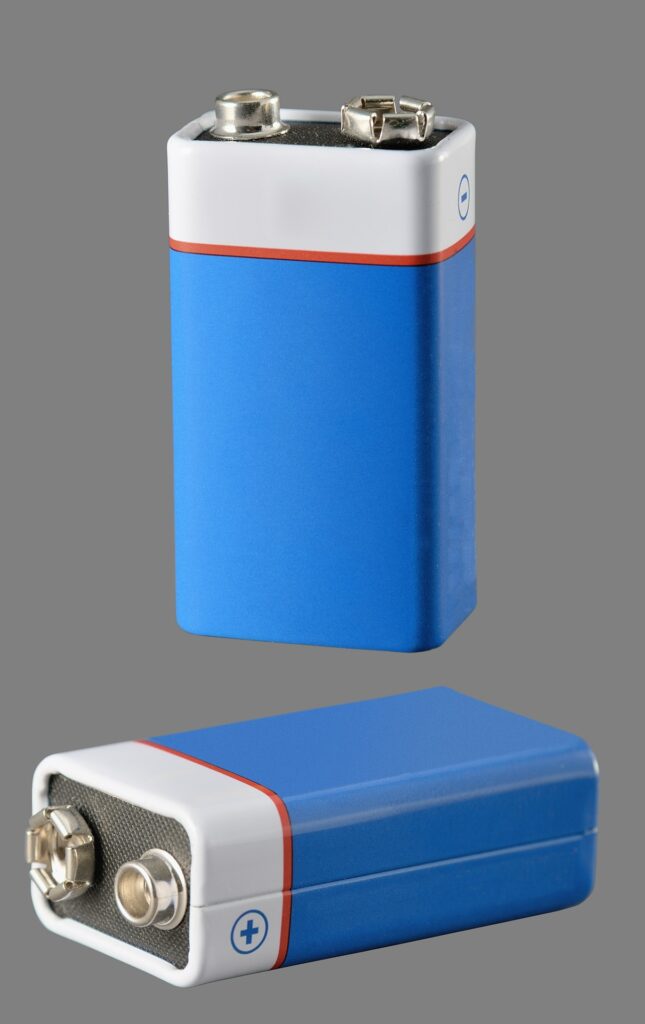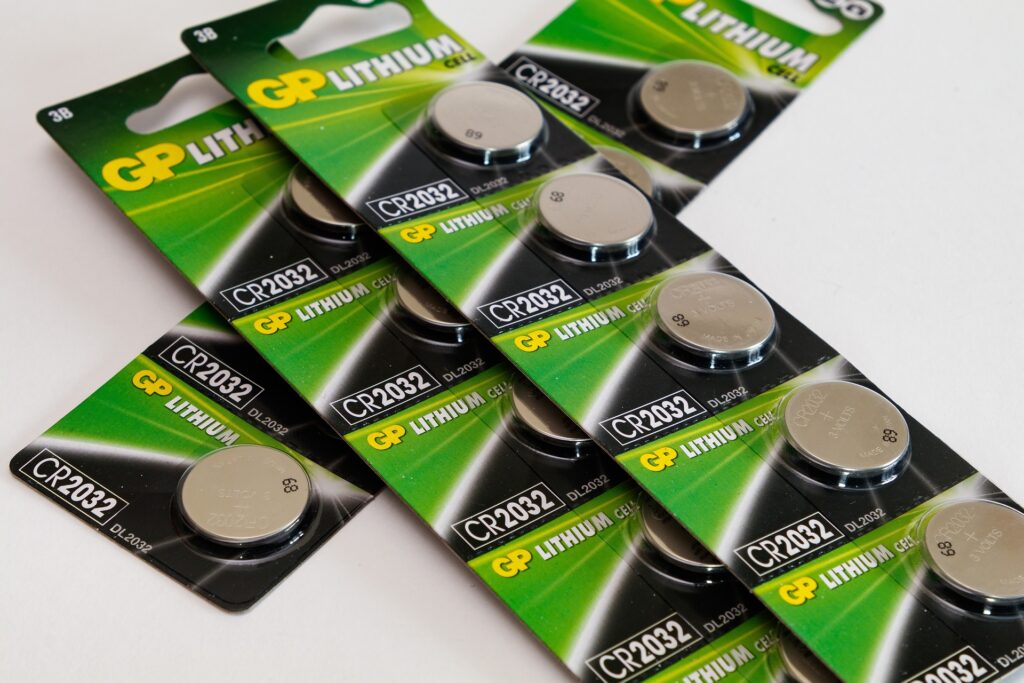In a world driven by technology, safely recycling lithium batteries has become a critical aspect of our responsibility towards the environment. These compact powerhouses fuel our devices, from smartphones to electric vehicles, offering convenience and efficiency. However, their improper disposal can lead to severe environmental hazards. In this comprehensive guide, we’ll delve into the world of safely recycling lithium batteries, exploring the reasons, methods, and benefits of responsible disposal.
Introduction
The importance of recycling lithium batteries
In today’s digital age, where lithium batteries power everything from our smartphones to renewable energy storage systems, the imperative to safely recycle lithium batteries has never been more vital. These power sources enable the seamless functioning of our modern world, yet their improper disposal poses grave threats. Through responsible recycling, we can harness the potential of these energy-dense batteries while safeguarding our planet. This guide serves as your compass, navigating the complexities of battery recycling and empowering you to take actionable steps towards a cleaner, greener future.
The environmental concerns and the need for safe disposal
As the demand for lithium batteries surges, so do the environmental concerns associated with their disposal. The intricate chemistry that makes these batteries efficient also renders them hazardous if not managed properly. The improper discarding of batteries can lead to soil and water contamination, endangering delicate ecosystems. Beyond local consequences, these actions contribute to the broader electronic waste crisis. Safely recycling lithium batteries mitigates these risks, preventing toxic leaching, reducing resource extraction, and curbing the ecological impact. By making informed decisions about battery disposal, we can collectively address these challenges and pave the way for a sustainable tomorrow.
Understanding Lithium Batteries
Lithium batteries, including lithium-ion (Li-ion) and lithium-polymer (LiPo) batteries, are the beating heart of our electronic devices. Their lightweight design and high energy density make them ideal for portable gadgets. Li-ion batteries power smartphones, laptops, and power tools, while LiPo batteries find their place in remote-controlled vehicles, drones, and even medical equipment.
The composition and types of lithium batteries
Lithium batteries, comprising cathodes, anodes, and electrolytes, generate energy through controlled chemical reactions. Two prevalent types, lithium-ion (Li-ion) and lithium-polymer (LiPo), dominate the landscape. Li-ion boasts high energy density, while LiPo offers flexibility in shape and size, each serving distinct purposes in our tech-driven lives.
Their prevalent use in various devices and industries
Lithium batteries power an array of devices and industries, forming the lifeblood of modern conveniences. From smartphones to electric vehicles, medical implants to renewable energy storage, their efficiency and reliability make them indispensable. Their role extends to aerospace, powering satellites and space rovers, underscoring their significance in technology’s tapestry.
Risks and Challenges
The proliferation of lithium batteries has led to concerns over their safe disposal. Safely recycling lithium batteries is crucial due to the potential hazards they pose. Lithium batteries contain toxic chemicals that can leach into the environment if not disposed of properly. The most alarming risk is the potential for thermal runaway—a phenomenon that can lead to battery fires and explosions. To prevent such risks, responsible recycling practices are paramount.
The potential hazards of improper disposal
Improperly discarding lithium batteries poses serious hazards, endangering both the environment and human health. These batteries contain toxic chemicals that, when leaked into the ecosystem, can contaminate soil and water. The risk of fires and explosions due to mishandling further underscores the urgency of safely recycling lithium batteries.
The risks of fire, leakage, and environmental pollution
Safely recycling lithium batteries is imperative due to the risks they pose. Inadequate disposal can lead to battery fires, releasing toxic fumes and endangering surroundings. Leakage of corrosive chemicals further threatens ecosystems. These cumulative impacts contribute to environmental pollution, underlining the critical need for proper disposal procedures.
Benefits of Recycling Lithium Batteries
Safely recycling lithium batteries not only mitigates environmental risks but also presents a range of benefits. These batteries contain valuable materials like lithium, cobalt, and nickel, which can be reclaimed and reused. By recycling, we reduce the demand for mining these resources, thereby lessening the impact on delicate ecosystems. Moreover, it minimizes the accumulation of electronic waste in landfills, where hazardous components can contaminate soil and water.
Positive impact of recycling on the environment
Safely recycling lithium batteries has a profound environmental ripple effect. It curtails the release of hazardous materials, reducing soil and water pollution. By preventing resource-intensive mining, recycling conserves energy and preserves ecosystems. Embracing responsible disposal practices contributes to a cleaner, greener planet.
The potential for recovering valuable materials
Recycling lithium batteries isn’t just about disposal; it’s about resource reclamation. Valuable materials like lithium, cobalt, and nickel can be recovered through recycling processes. This conserves finite resources, reduces mining’s ecological footprint, and lessens dependence on raw material extraction, aligning with sustainable practices.
Safe Collection and Storage
Safely recycling lithium batteries starts with proper collection and storage. Many communities offer drop-off points or collection centers specifically designed for batteries. Storing used batteries in a cool, dry place is essential to prevent heat-related incidents. To further reduce risks, avoid storing them near flammable materials and refrain from puncturing or damaging the battery’s casing.
Guidelines for proper battery collection and temporary storage
Safely recycling lithium batteries begins with proper collection and storage. Locate designated battery drop-off points or recycling centers. Store used batteries in cool, dry places, away from heat sources. These simple steps ensure safe handling and transportation, reducing the risk of leaks or fires.
The importance of preventing physical damage
Preventing physical damage is paramount in safely recycling lithium batteries. Even minor damage can compromise battery integrity and increase the risk of hazardous incidents. Store batteries separately from sharp objects, tools, or conductive materials to prevent punctures, leaks, and short circuits, guaranteeing safe storage and transportation.

Choosing a Recycling Center
Selecting a reputable recycling center is paramount to safely recycling lithium batteries. Reputable facilities follow environmentally responsible practices, adhering to strict guidelines for battery disposal. Look for certifications such as R2 and e-Stewards, which demonstrate a commitment to ethical and safe recycling processes. Research local recycling options to find a center that aligns with these principles.
Tips on selecting reputable recycling facilities
Choosing the right recycling facility for safely recycling lithium batteries is pivotal. Prioritize those with a track record of ethical practices. Research online reviews and consult local environmental agencies for recommendations, ensuring your batteries end up in responsible hands.
Certifications and responsible practices to look for
Look for recycling centers with certifications like R2 and e-Stewards. These attest to their commitment to environmentally sound practices. Responsible facilities adhere to proper dismantling, hazardous material treatment, and metal recovery, guaranteeing that your batteries are safely recycled in an eco-friendly manner.
Preparation for Recycling
Before sending your batteries for recycling, several preparatory steps ensure a smooth process. Discharging batteries to a safe voltage minimizes the risk of electrical hazards during transport and recycling. Clear labeling indicating the battery type and charge status helps recycling staff handle them correctly. Packaging batteries securely prevents any potential damage that could lead to leakage or combustion.
The steps to take before sending batteries for recycling
Before safely recycling lithium batteries, ensure proper preparation. Discharge batteries to a safe level, minimizing the risk of electrical mishaps. Thoroughly clean batteries to remove dirt and grime, and remove them from devices. Following these steps ensures safe handling and transport.
Discharging, labeling, and packaging requirements
Discharging batteries before recycling is essential for safety. Tape the terminals to prevent short circuits, and label the packaging to indicate the battery type and status. Place batteries in non-conductive bags or containers, cushioned to avoid damage during transit, and seal them securely to prevent leakage.
Drop-off vs. Mail-in Recycling
Choosing between drop-off locations and mail-in services depends on your convenience and access to recycling facilities. Drop-off points provide immediate disposal options, while mail-in services are valuable for those in areas with limited access to battery recycling centers. Opt for the method that aligns with your needs and location.
Pros and cons of dropping off batteries vs. using mail-in services
Deciding between dropping off batteries and mail-in services for safely recycling lithium batteries involves trade-offs. Drop-off offers immediacy, while mail-in suits remote areas. Both options contribute to responsible disposal, so consider factors like location, accessibility, and convenience based on your individual circumstances.
Convenience, safety, and accessibility
Choosing between drop-off and mail-in services for safely recycling lithium batteries hinges on factors like convenience and accessibility. Drop-off points offer local accessibility and immediate disposal. In contrast, mail-in services are ideal for remote locations, ensuring that even those in distant areas can responsibly recycle their batteries.
Recycling Process
The recycling process for lithium batteries involves several stages to ensure both safety and environmental preservation. After collection, batteries are sorted based on type, condition, and chemistry. During dismantling, batteries are disassembled, and valuable components like metals are separated for recovery. Proper treatment of hazardous materials follows, reducing the environmental impact of battery disposal.
The general process of recycling lithium batteries
Safely recycling lithium batteries involves a multi-step process. Batteries are collected, sorted, and prepared for dismantling. Valuable metals and components are recovered through sophisticated techniques. Hazardous materials are treated appropriately, ensuring both environmental protection and resource reclamation.
Sorting, dismantling, and material recovery
The recycling process for lithium batteries begins with sorting, categorizing batteries by type and chemistry. Dismantling follows, where batteries are disassembled, and valuable materials like lithium and cobalt are extracted. Recovered metals are refined for reuse, while hazardous components are treated safely, contributing to safely recycling lithium batteries.
Environmental Impact
Safely recycling lithium batteries significantly lessens the environmental footprint of these energy sources. The recovery of valuable metals reduces the need for resource-intensive mining operations. Additionally, recycling batteries prevents the release of toxic chemicals and heavy metals into the environment, contributing to a healthier ecosystem.
The positive effects of proper recycling on the environment
Safely recycling lithium batteries brings a host of positive impacts to the environment. It curbs the release of hazardous substances, prevents soil and water contamination, and reduces the demand for raw materials. By embracing responsible recycling, we contribute to a cleaner, healthier planet for current and future generations.
Reduction in resource extraction and landfill waste
Safely recycling lithium batteries directly addresses the problem of resource depletion. Recovering valuable metals from discarded batteries reduces the need for resource-intensive mining operations. Additionally, recycling curtails landfill waste, preventing toxic components from seeping into the environment and fostering a more sustainable waste management system.
DIY Battery Disposal Precautions
For individuals who can’t access recycling centers, certain precautions can minimize the risks of home battery disposal. Safely recycling lithium batteries at home involves storing them in a non-conductive container, such as a plastic bag, to prevent short circuits. Ensure the battery terminals are taped to avoid accidental contact and potential sparks. Never puncture or attempt to disassemble a battery at home.
Safety measures for individuals who can’t access recycling facilities
For those without access to recycling centers, safety remains paramount. Store used batteries in a cool, dry place, separate from flammable items. Tape terminals to prevent short circuits, and place them in non-conductive bags or containers. Prioritize safely recycling lithium batteries when the opportunity arises.
Guidelines for safe temporary storage and disposal
Temporary storage of used batteries requires caution. Keep them in a secure, cool, and dry location, away from heat sources. Tape terminals to prevent electrical discharge and potential hazards. When discarding, recycle whenever possible, ensuring safely recycled lithium batteries rather than letting them end up in landfills.
Regulations and Compliance
Safely recycling lithium batteries also involves adhering to local regulations and laws governing battery disposal. Many jurisdictions have specific guidelines for handling hazardous materials, including batteries. Educate yourself about these regulations to ensure you’re compliant and contributing to environmentally responsible practices.
Relevant regulations and laws related to battery disposal
Navigating the landscape of safely recycling lithium batteries involves understanding local regulations. Many regions have specific guidelines governing battery disposal due to their environmental impact. Familiarize yourself with these laws to ensure compliance and ethical recycling, safeguarding both the environment and your community.
The importance of following legal requirements
Adhering to legal regulations for safely recycling lithium batteries isn’t just a responsibility—it’s imperative. By following these guidelines, you contribute to a collective effort to protect the environment and public health. Prioritize the proper disposal of batteries to prevent environmental harm, and encourage others to do the same.
Innovations in Battery Recycling
The field of battery recycling is evolving, with innovations aimed at improving efficiency and sustainability. Researchers and companies are developing advanced technologies to streamline the process and maximize material recovery. These innovations promise a greener future by making battery recycling more accessible and effective.
Advancements in battery recycling technologies
The world of battery recycling is evolving, driven by technological advancements. Innovations such as improved sorting techniques and novel recovery processes are enhancing the efficiency and effectiveness of safely recycling lithium batteries. These breakthroughs signal a promising future for sustainable battery disposal practices.
Efforts to improve sustainability and efficiency
In the quest for greener practices, industries are intensifying efforts to bolster the sustainability of battery recycling. Innovations are targeted at boosting efficiency, minimizing waste, and maximizing material recovery. By incorporating these advancements, the journey towards safely recycling lithium batteries becomes more environmentally conscious and resource-efficient.
Spreading Awareness
Promoting the practice of safely recycling lithium batteries is vital for creating a culture of responsible battery disposal. Engage in conversations with friends, family, and colleagues about the environmental risks of improper disposal. Share information about local recycling options and encourage others to join the effort.
Suggestions for educating others about safe battery disposal
Spreading awareness about safely recycling lithium batteries starts with education. Share information through social media, workshops, and community events. Highlight the environmental risks of improper disposal and the benefits of recycling. Empower others to make informed choices for a sustainable future.
The role of community and collective responsibility
Creating a culture of responsible battery disposal requires collective action. Communities play a pivotal role in supporting recycling initiatives, from establishing drop-off points to organizing educational campaigns. By embracing safely recycling lithium batteries as a communal effort, we can amplify our positive impact on the environment.

Conclusion
In the age of rapid technological advancement, safely recycling lithium batteries stands as a testament to our commitment to both innovation and environmental stewardship. These compact power sources empower our devices, yet their improper disposal casts a shadow of potential harm. By understanding the intricacies of battery recycling, recognizing the risks of negligence, and embracing responsible practices, we can collectively reshape the narrative.
In this journey, every choice to responsibly dispose of batteries echoes with significance. It’s not just about relinquishing old devices; it’s about consciously safeguarding our planet’s health. It’s about acknowledging the power of collective action, recognizing that each battery recycled is a step towards a sustainable future.
As you embark on your quest to safely recycle lithium batteries, remember that the impact transcends individual efforts. By sharing knowledge, advocating for responsible disposal, and fostering a culture of sustainability, you become part of a global movement. The road to a greener future is paved with the informed decisions of individuals who choose to make a difference—one battery at a time.
FAQs
- How can I identify lithium batteries? Lithium batteries usually have the letters “Li-ion” or “LiPo” on them. They’re often rechargeable and can be found in various devices.
- Can I dispose of lithium batteries in regular trash? No, it’s not safe to dispose of lithium batteries in regular trash. Safely recycling lithium batteries is crucial to prevent environmental harm.
- What materials can be recovered during lithium battery recycling? Recycling can recover valuable materials like lithium, cobalt, and nickel, which can be used to create new batteries and reduce resource extraction.
- Are there any incentives for recycling lithium batteries? Some regions offer incentives, such as recycling programs or discounts for returning batteries. Check with local recycling centers for details.
- How frequently should I recycle my lithium batteries? It’s recommended to recycle batteries as soon as they’re no longer needed or have reached the end of their life cycle to ensure safe disposal.




